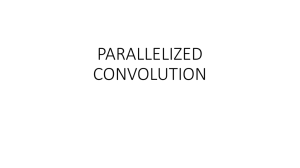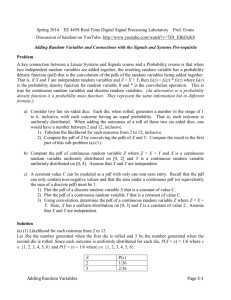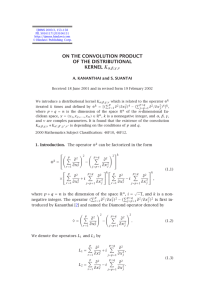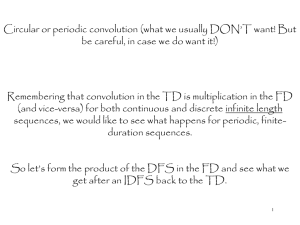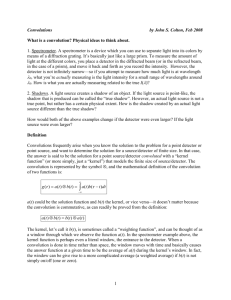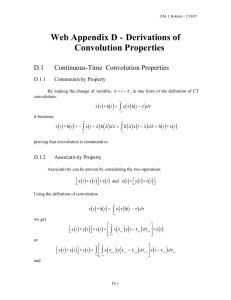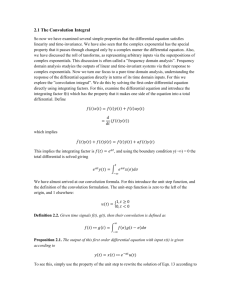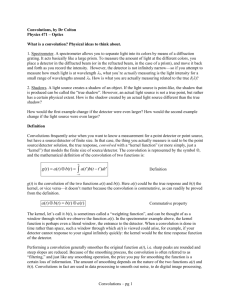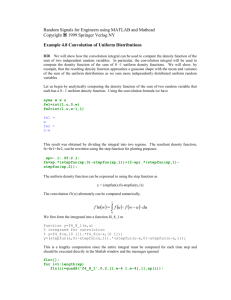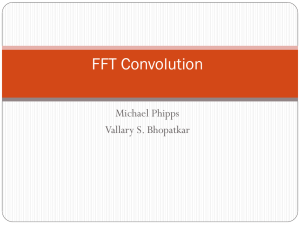2/29/2012 Spring 2012 ME964 ME964 High Performance
advertisement
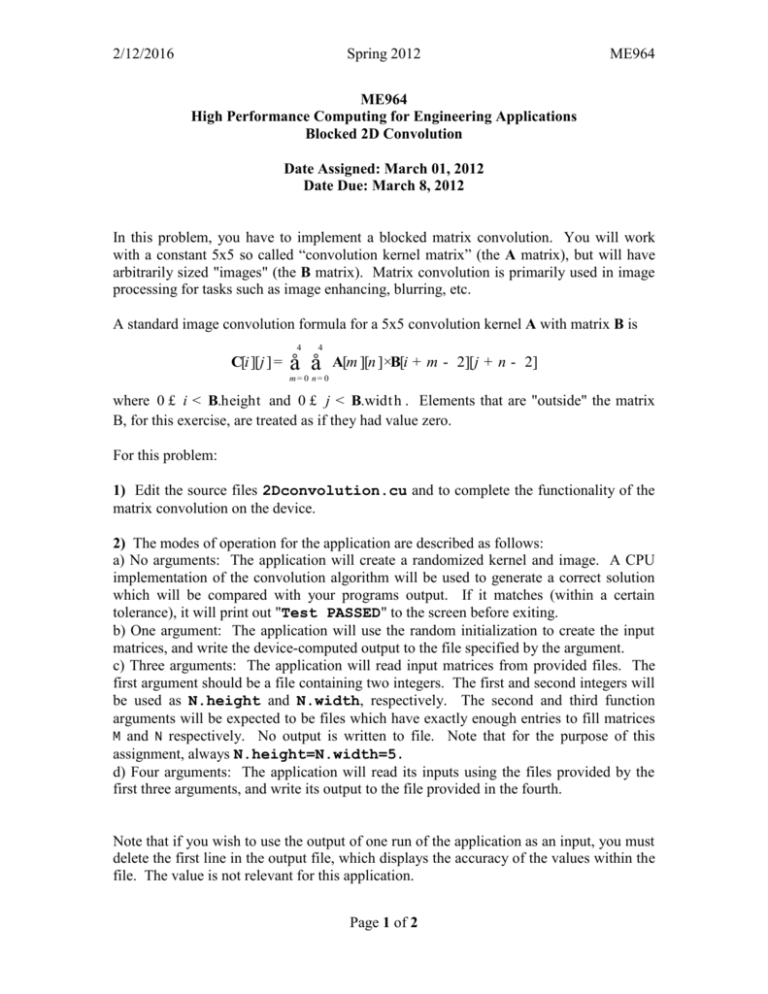
2/12/2016 Spring 2012 ME964 ME964 High Performance Computing for Engineering Applications Blocked 2D Convolution Date Assigned: March 01, 2012 Date Due: March 8, 2012 In this problem, you have to implement a blocked matrix convolution. You will work with a constant 5x5 so called “convolution kernel matrix” (the A matrix), but will have arbitrarily sized "images" (the B matrix). Matrix convolution is primarily used in image processing for tasks such as image enhancing, blurring, etc. A standard image convolution formula for a 5x5 convolution kernel A with matrix B is 4 C[i ][j ] = 4 å å A[m ][n ]×B[i + m - 2][j + n - 2] m= 0 n= 0 where 0 £ i < B.height and 0 £ j < B.widt h . Elements that are "outside" the matrix B, for this exercise, are treated as if they had value zero. For this problem: 1) Edit the source files 2Dconvolution.cu and to complete the functionality of the matrix convolution on the device. 2) The modes of operation for the application are described as follows: a) No arguments: The application will create a randomized kernel and image. A CPU implementation of the convolution algorithm will be used to generate a correct solution which will be compared with your programs output. If it matches (within a certain tolerance), it will print out "Test PASSED" to the screen before exiting. b) One argument: The application will use the random initialization to create the input matrices, and write the device-computed output to the file specified by the argument. c) Three arguments: The application will read input matrices from provided files. The first argument should be a file containing two integers. The first and second integers will be used as N.height and N.width, respectively. The second and third function arguments will be expected to be files which have exactly enough entries to fill matrices M and N respectively. No output is written to file. Note that for the purpose of this assignment, always N.height=N.width=5. d) Four arguments: The application will read its inputs using the files provided by the first three arguments, and write its output to the file provided in the fourth. Note that if you wish to use the output of one run of the application as an input, you must delete the first line in the output file, which displays the accuracy of the values within the file. The value is not relevant for this application. Page 1 of 2 2/12/2016 Spring 2012 ME964 Report. This problem will require a performance testing and analysis process. Included in the distribution folder is a subfolder called "test", which contains two test case input sets. Using these test cases, and any others that you wish to create to support your findings, provide answers to the following questions, along with a short description of how you arrived at those answers. A. Generate a png plot that shows how the CPU and GPU convolution implementations scale with the size of the input. For this question, consider images B of increasing size (width from 24 to 212, assume square images). For the GPU, report the inclusive times. B. How much time is spent as an overhead cost of using the GPU for computation? Consider all code executed within your host function, with the exception of the kernel itself and the CPU computation of the convolution, as overhead. How does the overhead scale with the size of the input? Finally, remember that kernel invocations are normally asynchronous, so if you want accurate timing of the kernel's running time, you need to insert a call to cudaThreadSynchronize() after the kernel invocation. Alternatively, you can use what in the lecture we called the “Lazy Man’s profiler” to get timing information. Grading. Your submission will be graded as follows: i) Demo/knowledge: 25% - Computation runs on Euler, producing correct outputs files. ii) Functionality: 40% - Correct handling of boundary conditions - Uses shared and/or constant memory to cover global memory latency. iii) Report: 35% Page 2 of 2
